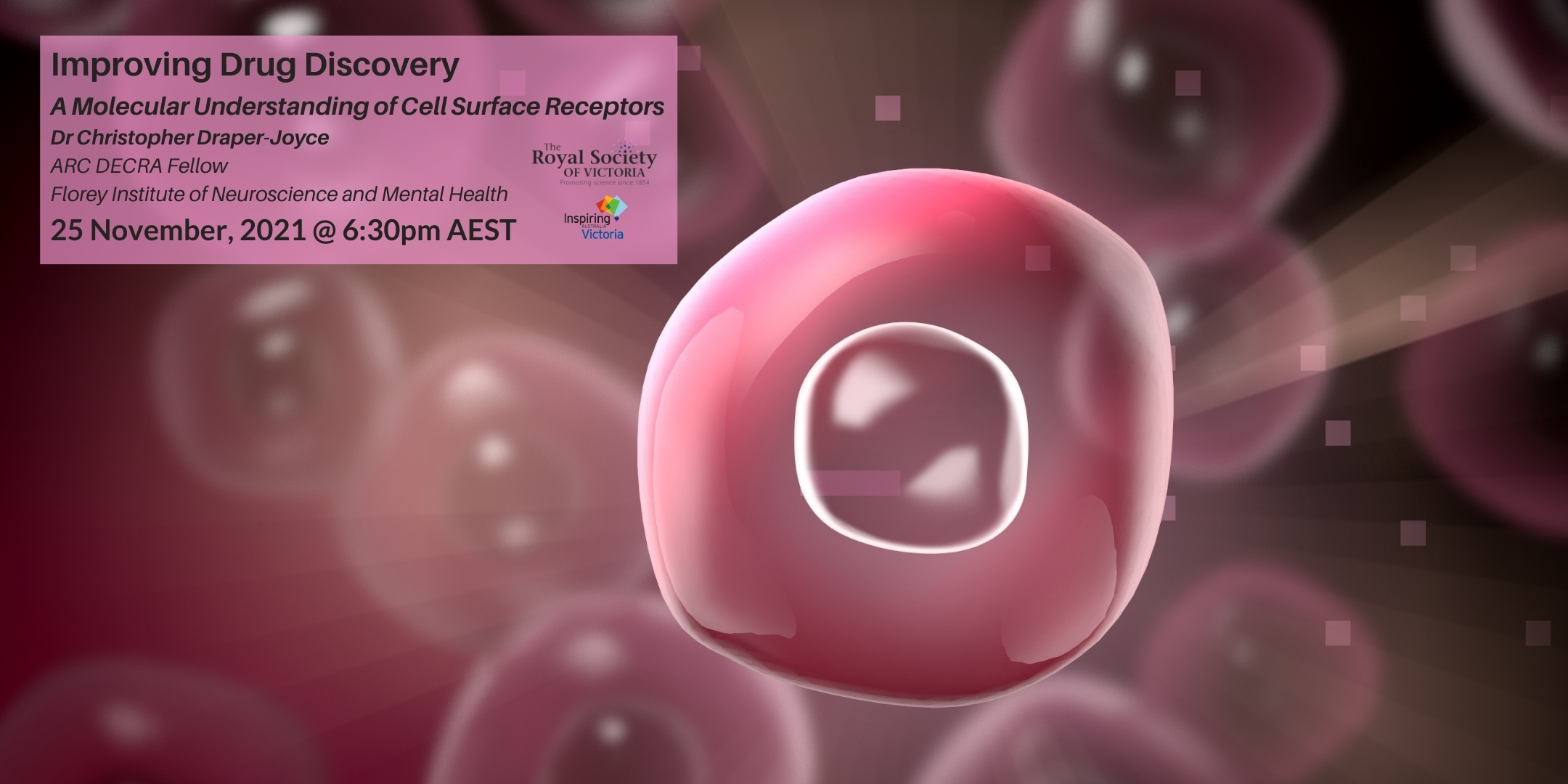Harnessing Space Crystals For Advanced Drug Discovery

Table of Contents
2.1. The Unique Properties of Space-Grown Crystals
The microgravity environment of space provides a unique setting for crystal growth, leading to significant improvements in crystal quality and the potential for discovering novel crystal structures. This has profound implications for various aspects of drug discovery.
H3: Superior Crystal Quality
Microgravity eliminates the effects of sedimentation and convection currents present on Earth, allowing for the undisturbed growth of larger, more perfect crystals. This translates to:
- Increased crystal size: Larger crystals provide more material for analysis, enhancing data reliability.
- Reduced imperfections: Fewer defects lead to higher-quality diffraction patterns, crucial for determining the crystal structure.
- Improved diffraction patterns: Sharper, clearer diffraction data provides higher resolution structural information.
- Enhanced data resolution: This leads to more accurate three-dimensional models of molecules, essential for structure-based drug design.
For example, research using the International Space Station has shown that space-grown lysozyme crystals exhibited significantly improved diffraction quality compared to Earth-grown counterparts, enabling the resolution of finer structural details critical for understanding its function.
H3: Novel Crystal Structures
The unique conditions in space, including altered convection patterns and reduced gravitational forces, may facilitate the formation of entirely new crystal structures not readily achievable on Earth. This opens the door to:
- Unique packing arrangements: Different spatial arrangements of molecules could lead to the discovery of novel drug targets.
- Altered protein conformations: Proteins might adopt different shapes in microgravity, revealing new binding sites for potential drugs.
- Potential for new drug targets: These unique structures could represent novel targets for drug development, expanding the range of treatable diseases.
Research suggests that some proteins crystallize in novel forms in space, potentially revealing previously unknown active sites relevant to drug development.
H3: Applications in Protein Crystallography
Protein crystallization is a cornerstone of drug discovery, enabling the visualization of drug-protein interactions. Space crystals significantly enhance this process by:
- Improved data for structure-based drug design: Precise structural information enables rational drug design.
- Facilitating the identification of new drug candidates: Understanding protein structure informs the development of targeted drugs.
- Enabling precise tailoring of drug molecules: Modifying drug structure to optimize its interaction with the target protein is key to drug efficacy.
The use of space crystals has enabled the resolution of complex protein structures previously unachievable on Earth, accelerating drug discovery efforts significantly.
2.2. Overcoming the Challenges of Space Crystallization
Despite the significant potential, harnessing space crystals for drug discovery faces considerable challenges.
H3: Cost and Accessibility
The high cost and logistical complexities associated with space research present significant hurdles:
- Launch costs: Transporting experiments to space is expensive, limiting the number of studies possible.
- Experimental setup complexities: Designing experiments for a microgravity environment requires specialized expertise and equipment.
- Limited access to space facilities: Only a limited number of facilities can conduct experiments on the International Space Station or other space platforms.
Potential solutions include the development of more affordable launch systems, miniaturized experiments that require less space, and the use of advanced robotic systems for automated operations.
H3: Data Transmission and Analysis
Transmitting large datasets from space presents another significant obstacle:
- Data volume: Crystallography experiments generate large amounts of data that require efficient transmission.
- Transmission speed limitations: Data transfer from space can be slow and subject to interruptions.
- Advanced computational tools for analysis: Sophisticated algorithms and high-performance computing are required to analyze the complex datasets.
The use of cloud computing, advanced compression techniques, and development of powerful data analysis algorithms are crucial to addressing these challenges.
2.3. Future Directions and Potential Impact
The full potential of space crystals in drug discovery requires further advancements and collaborative efforts.
H3: Collaboration and Technological Advancements
International collaboration and technological innovation are vital for progressing this field:
- Public-private partnerships: Combining expertise and resources from government agencies and private companies can accelerate research.
- Development of new space-based facilities: Dedicated space-based laboratories optimized for crystal growth would significantly boost research.
- Automation of experiments: Automated systems can improve efficiency and reduce human intervention in the space environment.
Ongoing collaborations between space agencies, pharmaceutical companies, and academic institutions demonstrate a growing commitment to advancing this research.
H3: Transforming Drug Discovery and Development
The impact of space crystals on drug discovery and development could be transformative:
- Faster drug development timelines: Improved crystal quality and novel structures could significantly shorten the drug discovery process.
- Improved drug efficacy: More accurate structural information leads to better drug design and enhanced efficacy.
- Personalized medicine advancements: Understanding complex protein structures at a higher resolution facilitates the development of personalized therapies.
Ultimately, this translates to improved patient care, faster access to life-saving medications, and significant economic benefits.
3. Conclusion: The Future of Drug Discovery Lies Among the Stars
The unique properties of space crystals offer significant advantages for advanced drug discovery, leading to superior crystal quality, novel structures, and enhanced protein crystallography. Overcoming the challenges of cost, accessibility, and data management through international collaboration and technological advancements will unlock the transformative potential of space-based crystal growth. Explore the exciting advancements in space crystallography and its potential to revolutionize drug development. Learn more about harnessing space crystals for groundbreaking medical discoveries!

Featured Posts
-
 Paris Fashion Week Amira Al Zuhairs Zimmermann Debut
May 24, 2025
Paris Fashion Week Amira Al Zuhairs Zimmermann Debut
May 24, 2025 -
 New Bipartisan Resolution Highlights Importance Of Canada Us Relations
May 24, 2025
New Bipartisan Resolution Highlights Importance Of Canada Us Relations
May 24, 2025 -
 Darwin Nightcliff Teen In Custody Following Fatal Shop Robbery
May 24, 2025
Darwin Nightcliff Teen In Custody Following Fatal Shop Robbery
May 24, 2025 -
 The Last Rodeo Exploring Neal Mc Donoughs Roles Faith And His Portrayal Of The Pope
May 24, 2025
The Last Rodeo Exploring Neal Mc Donoughs Roles Faith And His Portrayal Of The Pope
May 24, 2025 -
 Escape To The Country The Costs And Considerations
May 24, 2025
Escape To The Country The Costs And Considerations
May 24, 2025
Latest Posts
-
 Sylvester Stallone Faces New Rival In Tulsa King Season 3 Kevin Pollak
May 24, 2025
Sylvester Stallone Faces New Rival In Tulsa King Season 3 Kevin Pollak
May 24, 2025 -
 What Businesses Are Open On Memorial Day 2025 In Michigan
May 24, 2025
What Businesses Are Open On Memorial Day 2025 In Michigan
May 24, 2025 -
 Chef Tiffany Derry Returns To Master Chef As A Judge
May 24, 2025
Chef Tiffany Derry Returns To Master Chef As A Judge
May 24, 2025 -
 Tulsa King Season 3 Kevin Pollak To Antagonize Sylvester Stallone
May 24, 2025
Tulsa King Season 3 Kevin Pollak To Antagonize Sylvester Stallone
May 24, 2025 -
 Kevin Pollaks Tulsa King Season 3 Role A Threat To Sylvester Stallone
May 24, 2025
Kevin Pollaks Tulsa King Season 3 Role A Threat To Sylvester Stallone
May 24, 2025
